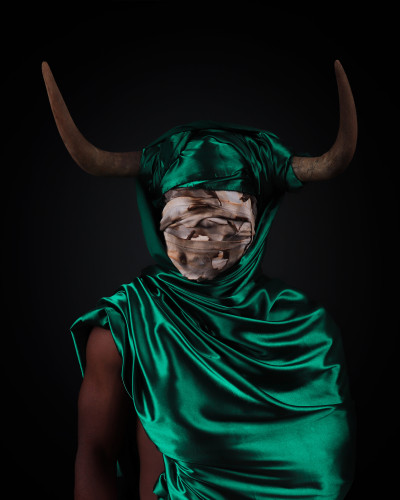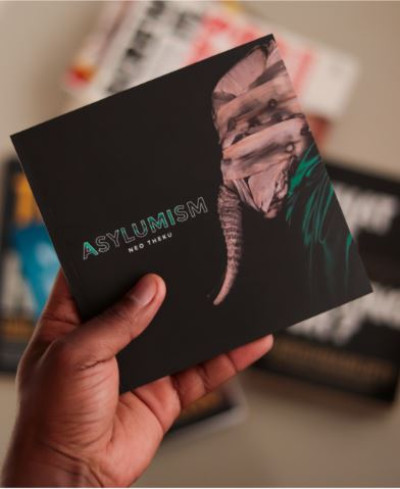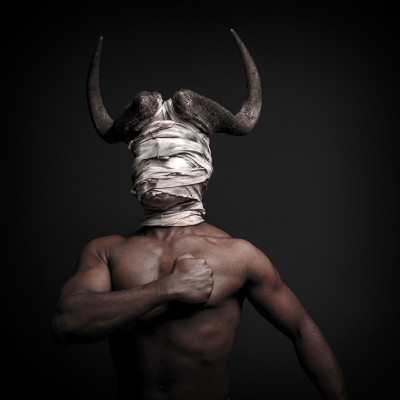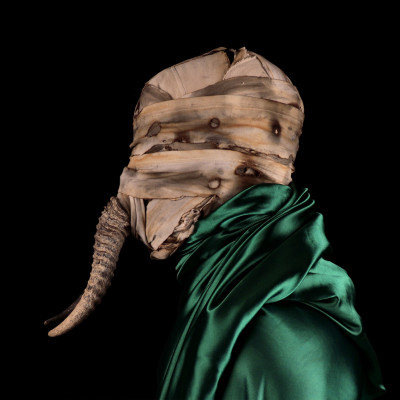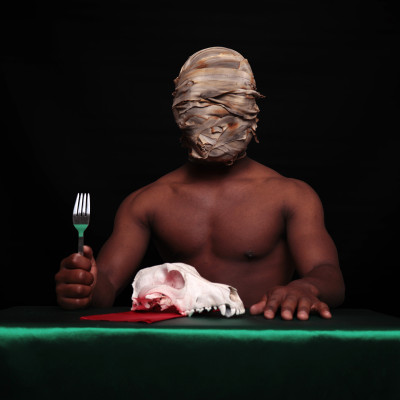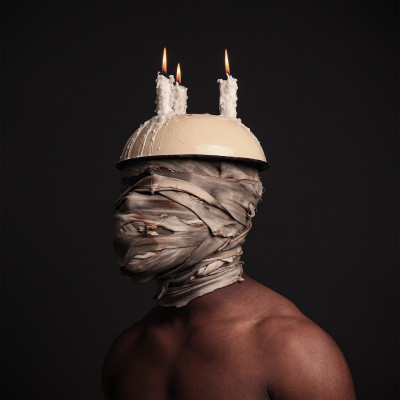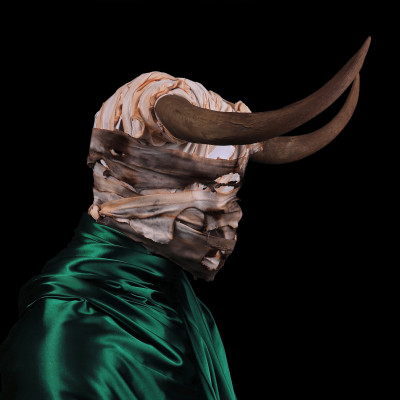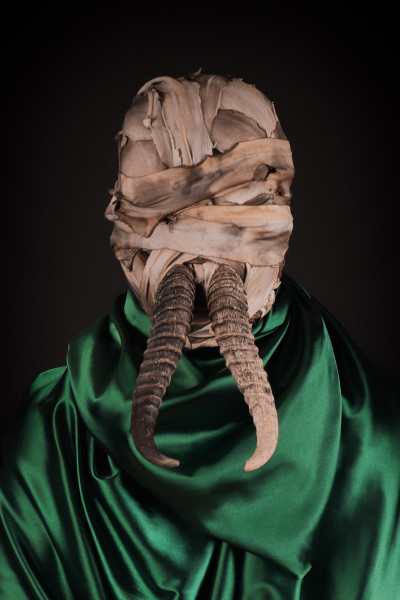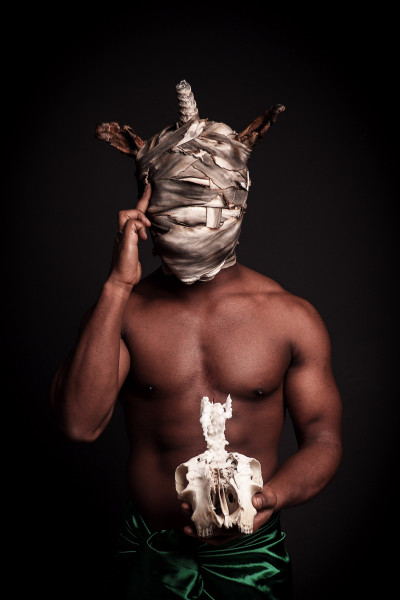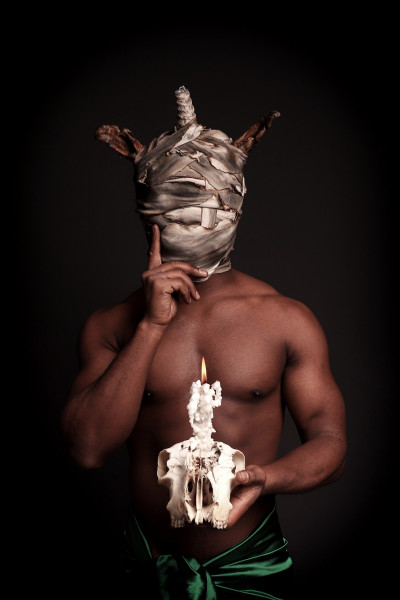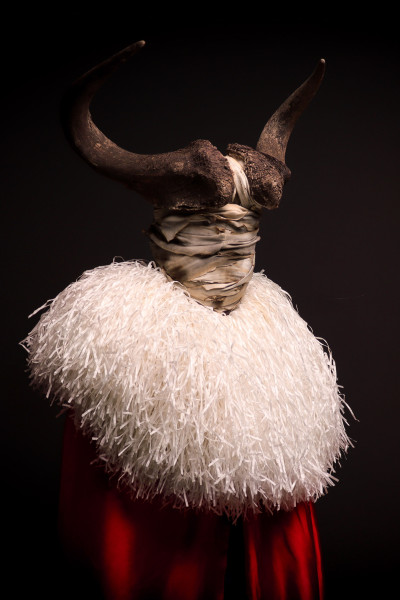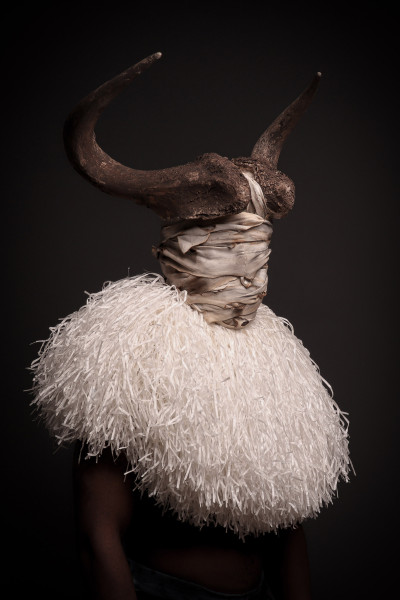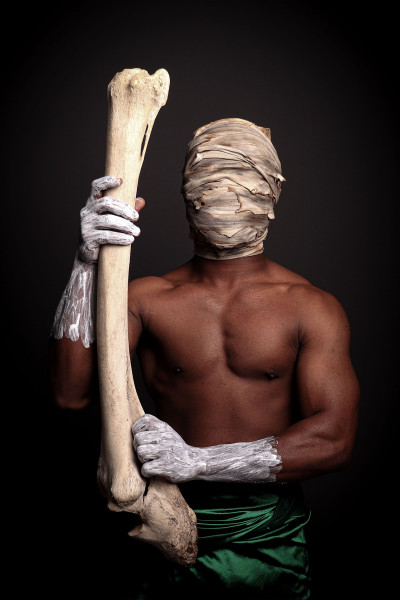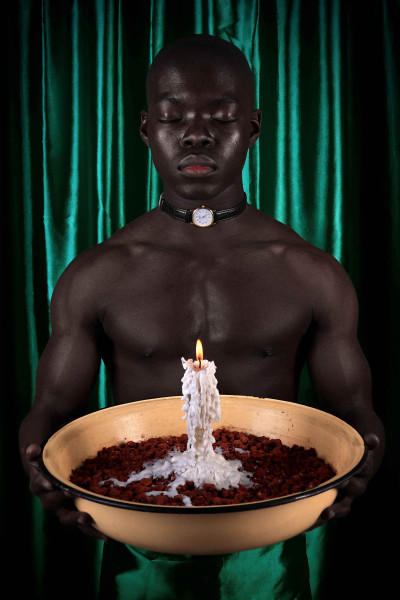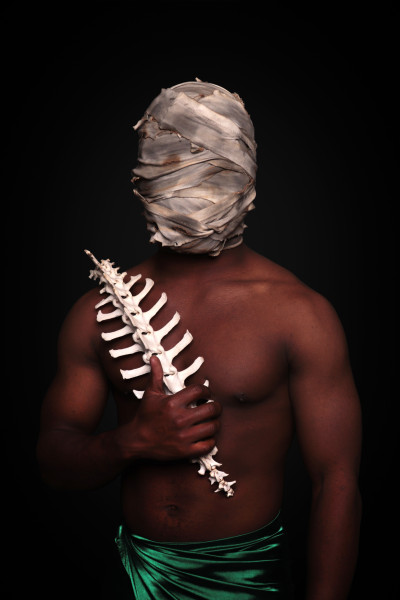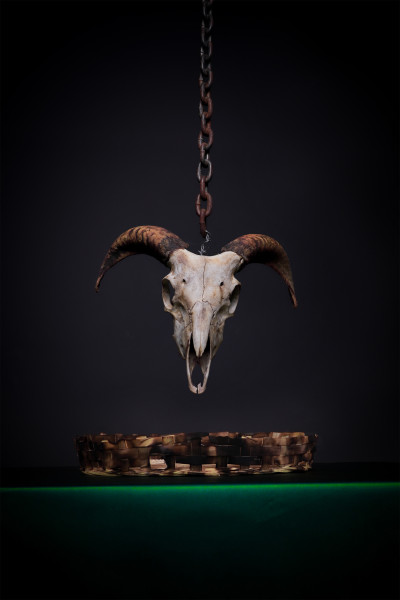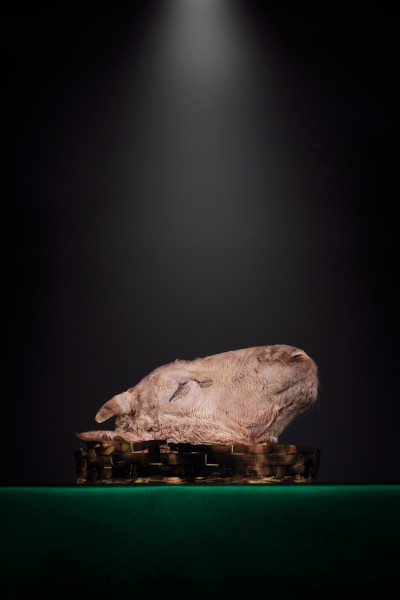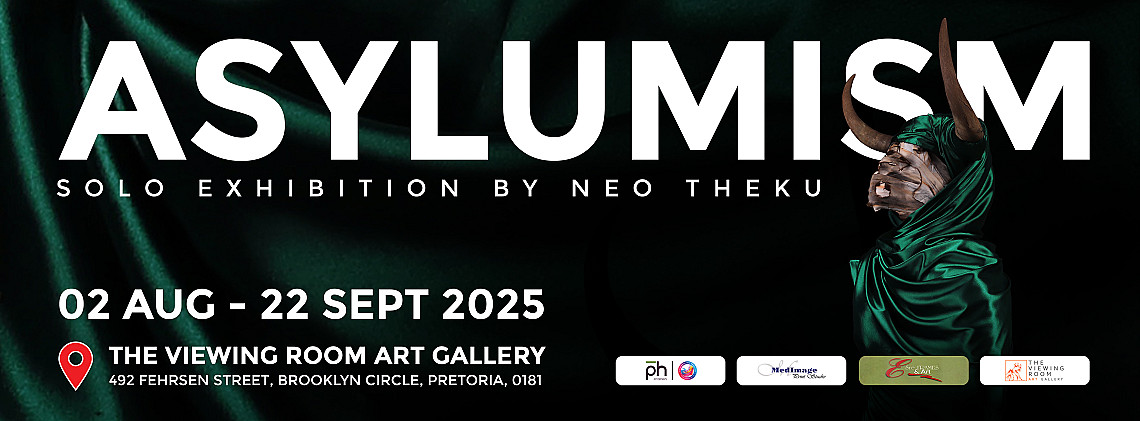
August 02, 2025 - September 22, 2025
492 Fehrsen Street, Pretoria, South Africa
Asylumism is a body of works created to address issues that are linked to the male figure. Brutal acts of violence and most suicide cases are commonly linked with the male figure, as a result of how men are perceived in their communities. Men are expected to be strong beings who should not express their emotions, often being compared to animals. Quotes: "All men are dogs; men should be strong like an ox; like a sheep, men should not cry"—These are used to condition men's psyche to ignore their emotional state of being. The hidden face is symbolic of how society devalues a male's existence. The horns on the heads of the figures represent men's position as head of the family and yet men are still treated like animals who are not given space for mental and emotional expression.Men live in an asylum created and programmed by society yet still portraying men as monsters.
Dehumanization:
The portrayal of men as animals (dogs, oxen, or sheep) mirrors how they are reduced to their physicality and utility. Asylumism explores the terror of dehumanization, where men are stripped of their humanity, turning into either monsters or victims of monstrous systems. The hidden faces in Asylumism express how men are often faceless, nameless beings within a community that fails to acknowledge their complexity.
Violence and the Male Figure:
Brutal acts of violence and high suicide rates are commonly linked to the mental and emotional suppression of a men. Acts of violence are often the result of hidden trauma or repression, with the figure committing the violence which symbolizes the ultimate breakdown of sanity or humanity. In this case, violence becomes a manifestation of internalized pain, desperation, and the inability to break free from societal expectations.
Horns, Symbol of Burden:
Horns on the head are a potent symbol of how men are positioned as leaders and protectors within their families but simultaneously dehumanized, denied emotional expression, and treated like animals. Horns often symbolize the "beast within," powerful and cursed. The Burden of strength — the "curse" of having to be invulnerable. In this sense, horns symbolize those who are forced to embody an idea of strength that does not allow for human weakness.
Living in an Asylum:
The metaphor of a system created by society. Asylums in horror are typically spaces of control, madness, and isolation. Men are living in an emotional and mental "asylum" where their feelings are conned or denied, ultimately becoming prisoners of societal expectations imposed upon them. This asylum is both literal (dealing with the actual consequences of mental health issues) and metaphorical (being trapped in roles that don't allow emotional expression).
Men as Monsters:
The ultimate horror in Asylumism is that society portrays men as monsters, despite their attempts to navigate a world that denies them humanity, it explores the "monster" as misunderstood, driven to destruction because they are not seen for who they truly are. For men, this mirrors the way they are often viewed as dangerous, aggressive, or emotionally unavailable, even when they are struggling with deep inner pain. The monster is often a product of society’s cruelty, oppression, or indifference. Men are dehumanized by labels like "dogs" and "oxen," and are made into monsters by the same system that refuses to see their pain. The tragedy is that society creates the monster it fears, failing to acknowledge the need for empathy and emotional care.
Resistance and Transformation:
While Asylumism focuses on the horror of emotional suppression and societal expectation, it also contains the potential for resistance. The monster often reveals an inner truth, challenging societal norms. The figures with their hidden faces and horns, may be symbolic of the need to unmask these expectations and redefine what it means to be a man.
